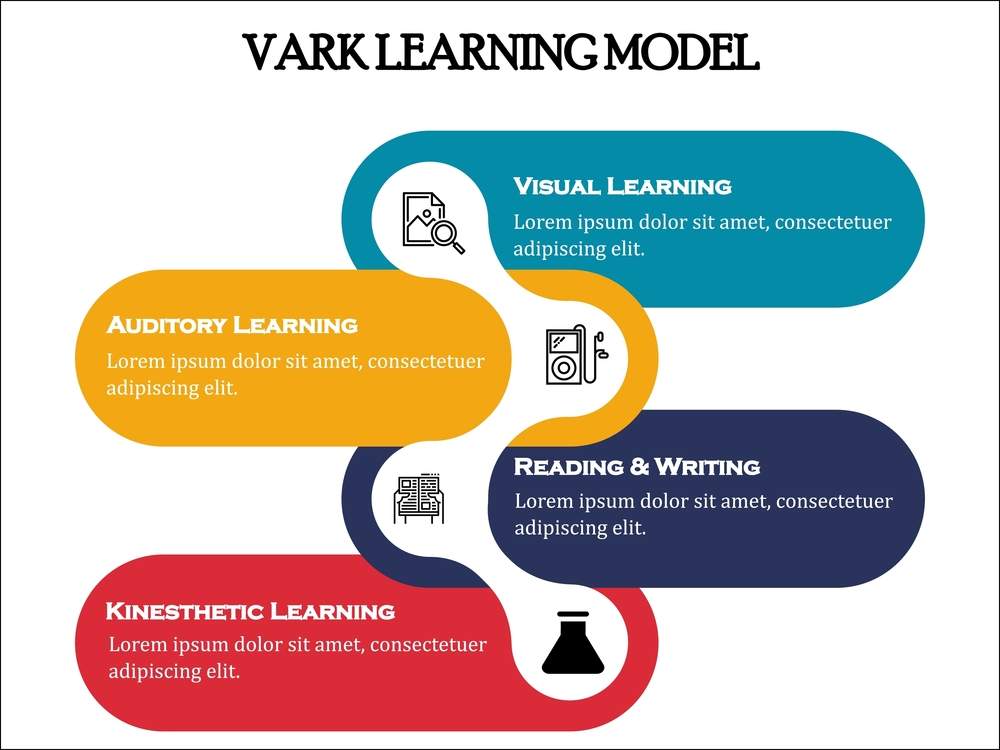Post Date: January 28, 2024

In the ever-evolving landscape of digital marketing, content visibility plays a pivotal role in capturing and retaining audience attention. For businesses aiming to dominate their niche, understanding and implementing effective content strategies are key. This article explores the powerful VARK Model and its role in tailoring content for maximum visibility, with a focus on achieving niche domination.
Understanding the VARK Model

The VARK Model, an acronym for Visual, Auditory, Reading/Writing, and Kinesthetic is a framework developed to categorize individuals based on their preferred learning styles. Each style represents unique preferences in processing and retaining information. Visual learners prefer graphics and images, auditory learners thrive on spoken information, reading/writing learners excel with written text, and kinesthetic learners learn best through hands-on experiences.
Understanding the VARK Model is crucial as it sheds light on how individuals consume and comprehend content. By acknowledging these diverse learning styles, content creators can tailor their material to cater to a broader audience.
Applying the VARK Model to Content Creation
To effectively apply the VARK Model, content creators need to delve into each learning style:
Visual Learners:
Visual learners prefer images, infographics, and videos. Create visually appealing content that conveys your message through graphics and illustrations.
Auditory Learners:
For those who learn best through listening, incorporate podcasts, webinars, and audio content. Ensure your content is accessible for those who prefer to consume information aurally.
Reading/Writing Learners:
This group appreciates written text. Craft well-written articles, blog posts, and reports to engage readers who thrive on written information.
Kinesthetic Learners:
Hands-on learners benefit from interactive content. Include quizzes, simulations, and practical examples in your content strategy.
Content Visibility for Niche Domination
Niche domination involves becoming a recognized authority within a specific market segment. By applying the VARK Model, content creators can enhance their visibility within these niches. Tailoring content to the preferred learning styles of the target audience ensures a more personalized and impactful connection.
Consider a fitness brand aiming to dominate the niche of home workouts. By creating a mix of visually appealing workout routines, informative podcasts on health and fitness, well-documented written guides, and interactive challenges, the brand can engage a wider audience with varied learning preferences.
Successful niche domination through targeted content strategies has become a hallmark of digital marketing success stories.
Practical Tips for Implementing the VARK Model
Implementing the VARK Model in your content strategy requires a systematic approach:
Audience Analysis:
- Use surveys, analytics, and social media insights to identify the predominant learning styles within your target audience.
Versatile Content Creation:
- Aim for versatility in your content. Incorporate visual elements in articles, audio snippets in written content, and interactive elements across platforms.
Tools for Analysis:
- Utilize tools that help analyze audience preferences. Track engagement metrics and adjust your strategy accordingly.
Measuring Success and Iterating
To ensure the effectiveness of your tailored content strategy, regularly measure success and be prepared to iterate:
Key Performance Indicators (KPIs):
- Identify KPIs such as engagement rates, click-through rates, and conversion rates specific to your content strategy.
Data Analysis:
- Analyze collected data and user feedback to gain insights into the performance of your content across different learning styles.
Iterative Refinement:
- Based on data analysis, refine and iterate your content strategy to continually improve visibility and engagement.

Conclusion:
In conclusion, the VARK Model provides a valuable framework for tailoring content to diverse learning styles, thereby maximizing visibility and engagement. For businesses aiming at niche domination, understanding and applying the VARK Model can be a game-changer in the competitive digital landscape. By creating content that speaks directly to the preferences of your audience, you not only enhance visibility but also establish a strong connection that fosters brand loyalty.






